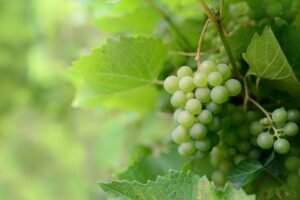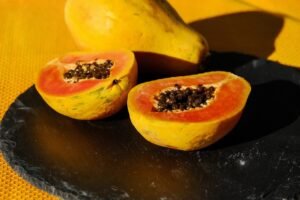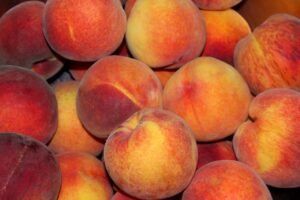As the seasons progress starting with one then onto the next, our eating regimens and the food varieties we feed our kids ought to adjust to match the changing environment and its effect on our wellbeing. In particular, certain natural products, while nutritious, probably won’t be the ideal decision for youngsters during these times because of their possible consequences for wellbeing, particularly in more youthful, more delicate frameworks. Here is a far-reaching manual for the 10 natural products children should avoid during season change to keep up with ideal well-being and prosperity.
10 Fruits That Kids Must Avoid
1. Grapes
Grapes, albeit loaded with nutrients and cell reinforcements, will generally hold an elevated degree of pesticides except if naturally developed. During season changes, kids’ resistant frameworks are more defenseless, and the possible poisons from non-natural grapes can be more hurtful than valuable.

2. Watermelon
Watermelon is a mid-year staple, known for its hydrating properties. In any case, as seasons change, this natural item can cause stomach-related issues in kids, for instance, enlarging and water support, as a result of its high water content. It’s best consumed with some limitations during more sweltering months.

3. Mangoes
Mangoes are plentiful in L-ascorbic acid and strands, yet they can increment heat in the body. During the change from spring to summer, consuming mangoes in enormous amounts can prompt stomach-related issues, throat disturbance, and other intensity-actuated afflictions in kids.

4. Bananas
While bananas are an excellent source of potassium and easy to digest, they can lead to mucus formation and exacerbate cold symptoms in children during colder months. Their cooling nature makes them less ideal during season changes, especially from warm to cool weather.

5. Citrus Fruits
Citrus natural products like oranges, lemons, and grapefruits are L-ascorbic acid forces to be reckoned with yet can be unforgiving on a kid’s stomach when consumed in overabundance, prompting heartburn or gastrointestinal uneasiness during delicate occasional changes.

6. Cherries
Cherries are anti-inflammatory and contain antioxidants, but they also have a warming effect on the body. Consuming them as the weather cools can disturb the body’s natural temperature regulation, making them a fruit to limit during autumn.

7. Pineapple
Pineapple is known for its bromelain content, which helps with processing. Be that as it may, it can likewise cause fiber-actuated bulging and is acidic, which might prompt mouth and throat disturbance in kids, especially during season changes when their resistance is compromised.

8. Papaya
Papaya is advantageous for absorption and is loaded with nutrients. However, its high fiber content can be trying for youthful stomach-related frameworks, particularly during the colder months, prompting inconvenience and swelling.

9. Peaches
Peaches are delightful and nutritious however can set off sensitivities in delicate people because of their fluffy skin and the mixtures they contain. During season changes, when youngsters’ resistant frameworks are changing, avoiding potential allergens is shrewd.

10. Apples
Apples, especially non-organic, are known to have high pesticide residues, which can be harmful to developing bodies. Moreover, the cold nature of apples in traditional medicine theories suggests they might not be the best choice during the cold-to-warm season transition, as they can exacerbate cold symptoms in children.

Feeding Kids Right During Season Changes
Understanding the need to change our youngsters’ eating routines as the seasons change is significant for their well-being. While natural products are a fundamental piece of a fair eating regimen, knowing which ones to stay away from during delicate times can assist with keeping up with their prosperity. Opt for seasonal, locally grown fruits that are known to be less reactive and more in harmony with the body’s needs during these transitions. Always aim for organic produce to minimize exposure to pesticides and other chemicals.
For guardians hoping to explore the occasional dietary changes for their children, zeroing in on delicate, warming food sources during colder months and light, hydrating choices during hotter periods can offer a reasonable methodology. Incorporating a variety of vegetables, whole grains, and lean proteins can also ensure that children receive all necessary nutrients without the potential negative impacts of certain fruits during season changes.
In conclusion, being mindful of the fruits our children consume as the seasons shift is a simple yet effective way to support their health. By choosing the right foods and avoiding those that might pose risks, we can help them navigate these transitions smoothly and maintain their vitality year-round.
FAQs About Seasonal Fruit Choices for Kids
1. Why should certain fruits be avoided during season changes for kids?
During season changes, youngsters’ resistant frameworks can be more defenseless, and their bodies might respond diversely to specific food sources. A few natural products can intensify sensitivities, lead to stomach-related issues, or influence the internal heat level’s guidelines. It is vital to pick natural products that help well-being and prosperity during these changes.
2. Can organic fruits still cause issues during season changes?
While organic fruits have lower pesticide levels, making them a healthier choice overall, the nature of the fruit itself can still cause issues during season changes. For example, fruits with high water content or those that are very cooling or heating might still affect children’s bodies during sensitive times, regardless of being organic.
3. Are there any fruits that are safe for kids to eat all year round?
Many organic products are by and large protected and gainful for youngsters to eat consistently, like apples, pears, and berries, when consumed with some restraint and as a feature of a reasonable eating routine. Regardless, it’s for each situation to perceive how individual children answer different food varieties developed starting from the earliest stage of their eating routine.
4. How could guardians guarantee their children are getting an adequate number of nutrients and supplements assuming that they stay away from specific organic products?
Guardians can guarantee their youngsters get a decent admission of nutrients and supplements by including different vegetables, entire grains, lean proteins, and different natural products that are very much endured during season changes. Enhancements may likewise be viewed as under the direction of a medical services supplier.
5. What are some tips for introducing new fruits to children during season changes?
While presenting new natural products during season changes, begin with modest quantities to perceive how the kid responds. Pick occasional and nearby organic products that are probably going to be fresher and more qualified to the body’s requirements during the ongoing environment. Draw in kids in choosing and planning organic products to make them more keen on attempting new food varieties.

